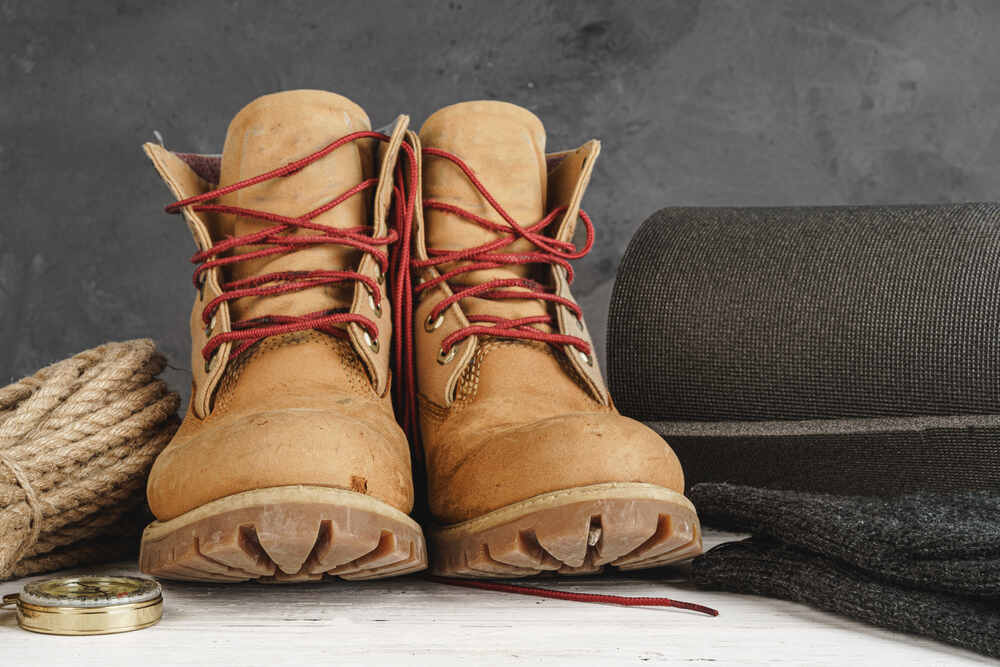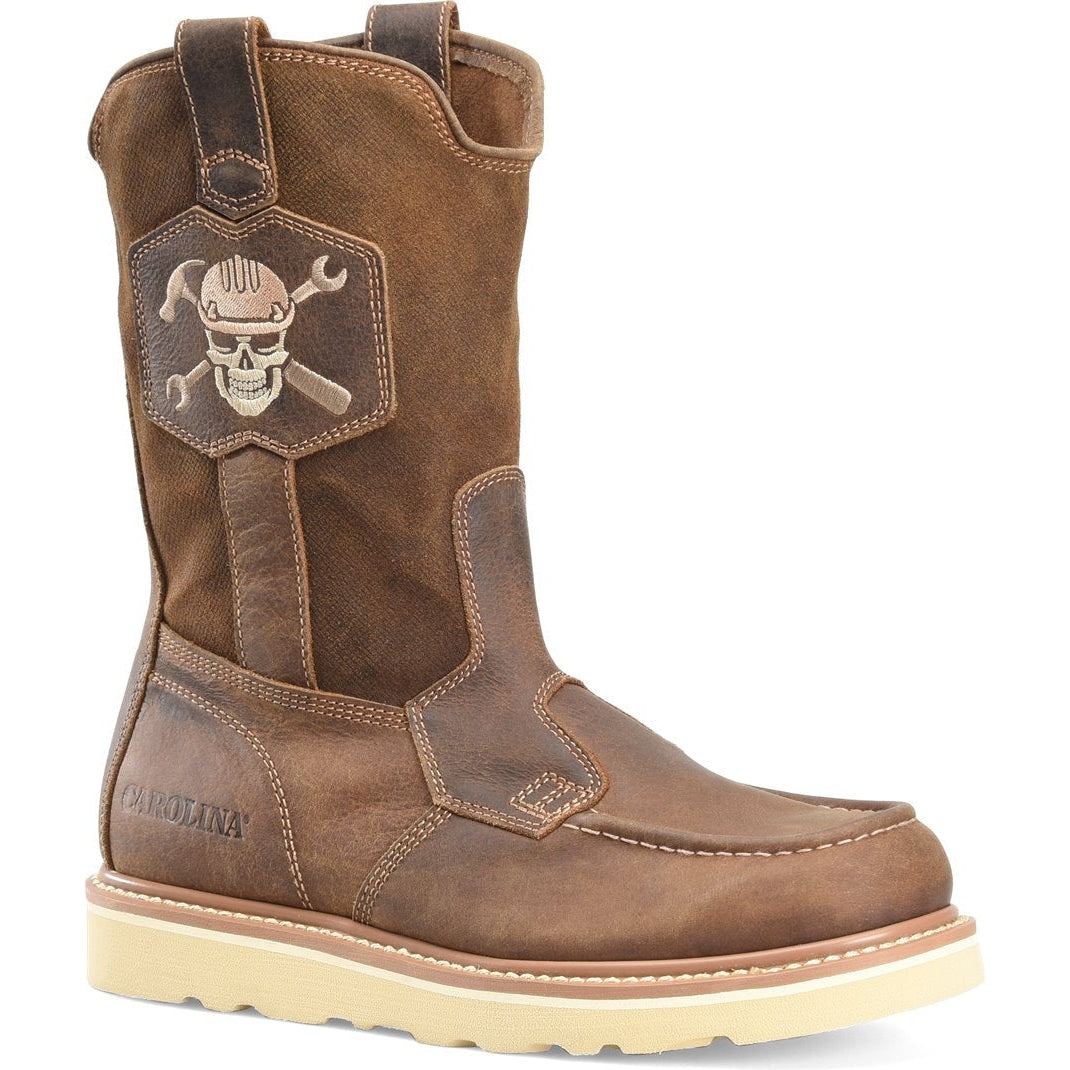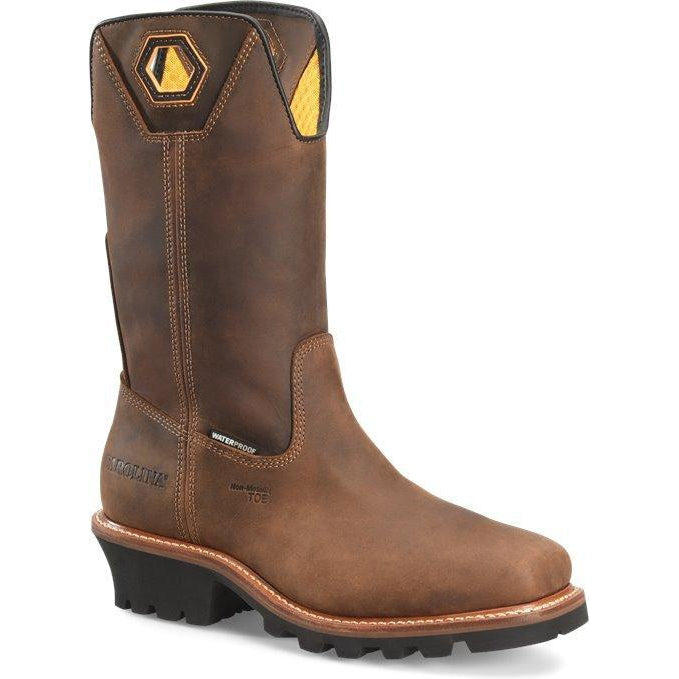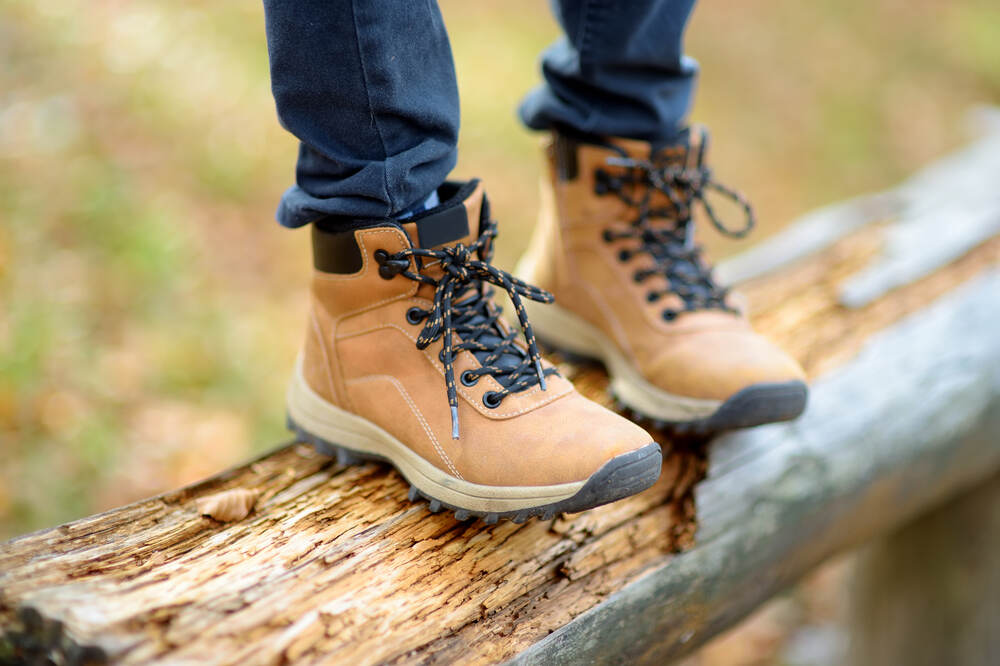So, you’ve got a fresh pair of best men's work boots. They’re sturdy, rugged, and ready to take on whatever life or job throw your way. But there’s just one problem: they feel like they’re made of concrete.
Whether you've added to your ever-growing boot collection or you're diving into boot season with a fresh pair of boots, you're probably eager to put them on and take them for a spin. But, let's face it, new boots can sometimes feel like a battle to break in.
We're here to guide you through the proper break-in process (without the pain and blisters) and arm you with all the crucial dos and don’ts you should keep in mind while doing so.
Are Boots Supposed to Hurt at First?
Boots can be a bit uncomfortable when you first introduce them to your feet. New boots often come with a bit of stiffness, especially if they're genuine leather boots or have a rugged work boot design usually used in safety toe boots. Why the initial discomfort?
Boot material, especially genuine leather, can be quite rigid when new. Leather needs time to conform to your natural foot shape. They need a few wears to fit just right.
- Sometimes, the boot size might be slightly off. Even a half-size too small can cause foot discomfort. It's crucial to get the boot fit just right to avoid unnecessary pressure points.
- Certain boot styles, like boot shaft heights or narrow-toed designs, can also contribute to initial discomfort. These styles might restrict movement or rub against your foot in ways you're not used to.
- New boots often lack the flexibility that comes with wear. The boot bends and moves differently than your foot does initially, causing friction and discomfort.
However, your pair of boots should never feel like torture devices. Sure, they might be a bit snug at first, but foot pain and discomfort shouldn't be the norm or long-term. Slight discomfort is okay; agony isn’t.
[prc-collections-carousel]
How Do I Stop My Boots from Hurting My Feet?
Start with getting the right boot size. If your toes are squished or your foot spills over the sides, you’re in for a world of hurt. No amount of breaking-in process can fix that. And oversized boots? They’re basically blisters waiting to happen. So, step one: get your size right. Proper boot fit is crucial for your comfort level throughout the break-in period and beyond.
Since sizes can vary slightly among brands, you can use the manufacturer's sizing guide. If you need help with measuring, check out our boot size guide to find your true fit. Then, check out our tips below on how to break in boots gradually.
In the meantime, you can make do with some extra cushioning. Opt for thicker socks or add additional padding where your boots rub against your skin. This creates a barrier, reducing friction and the likelihood of blisters.
How Long Does It Take to Break in Boots?
Patience is key here. The break-in period varies among different types of boots, depending on the boot material and boot style and design. Generally speaking, it can take anywhere from a few days to a couple of weeks.
High-quality leather boots are crafted from thick leather, which means they'll need a bit more time to mold to your feet. Typically, you're looking at around 80-120 hours of wear to hit that sweet spot, which translates to roughly 2-3 weeks of regular, full-time wear. But before you sigh, we've got some handy tips and tricks to help you break in your new boots faster and safely.

What Is the Fastest Way to Break in New Work Boots?
The fastest ways to break in new work boots might seem appealing when you're eager to start wearing them comfortably, but it's important to remember that speed isn't always the safest or most effective route. There are a lot of questionable “quick-fix” methods for breaking in new boots circling around that can actually do more damage than good.
Rushing the break-in process can lead to discomfort, blisters, painful arches, and even damage to the boots themselves. That said, below are some methods to break in boots without compromising comfort or damaging them. After all, aren't those few days or weeks of proper break-in time worth the years of wear?
How to Break in New Boots the Right Way: The Dos
Non-broken-in work boots can be a pain, figuratively and literally. So, how do you break in painful boots? With the right approach, you can go through the break-in process without sacrificing comfort or risking damage to your boots.
Here are some proven methods and techniques on how to break in boots and get to the all-day comfort you're waiting for.
1. Use a Leather Conditioner
Leather craves attention. Feed it. Before you even put your feet in boots, give them a treat with leather conditioner or conditioning oil. This softens the leather fibers and makes the pair of leather boots more pliable. Apply it generously, especially around areas that feel stiff. Think of it as boot moisturizer.
For those rugged work boots that go through a lot, a boot conditioner specifically designed for tough wear can work wonders. It not only softens but also protects the boot material from wear and tear.
2. Try a Boot Stretching Spray and Boot Stretchers
If you're dealing with tight spots, boot stretching spray and boot stretchers can do the trick. Spray the inside of your boots with socks on, or use a shoe stretcher and leave it on overnight. It gently expands the boot material without compromising its integrity. However, use thismethod sparingly, to avoid damage or overstretching.
3. Wear Thicker Socks and Additional Padding
Begin by wearing your new boots indoors with the thickest chunky socks you have (or even two pairs). This helps you assess the fit without getting the boots dirty and initiates the stretching process. Leather softens and stretches best with a combination of gentle pressure, subtle heat, and moisture. Summer months are ideal for breaking in boots naturally due to warmer temperatures and increased foot moisture.
4. Boot Bends and Damp Cloth
One simple trick to help speed up the break-in process is the boot bends. First, wipe your boots with a clean, damp cloth or conditioner to soften them up. Use your hands to flex the boot shaft back and forth gently. Flex the boots at the bend points (where your foot naturally flexes) to encourage flexibility. This helps loosen up the boot material and adapt the leather to your natural movements. Just be careful not to go overboard and stretch your boots too far.
5. Try Out Different Lacing Combos
Experiment with different lacing techniques. Skip a few eyelets, crisscross them, or go straight to find the most comfortable fit. Adjust the tension to relieve pressure points.
6. Start Gradually and Be Patient
Breaking in boots is a repetitive process. At first, wear your new boots for short bursts, ideally while at home (so you can take them off whenever you need to). A few hours here, a coffee break there. Let the leather get acquainted with the shape of your foot, then gradually prolong the periods of wear.
Premature wear, as well as too long periods of wear can lead to extra discomfort and actually work against your efforts to break them in. Give them a couple of days of rest between wears. Like it or not, breaking in boots takes some time. Depending on the materials and stiffness, the break-in time could take several days or up to several weeks, but it pays off in the end.
Be patient today so you can wear your favorite footwear tomorrow.
[prc-collections-carousel]
The Don'ts of Breaking in Boots
When breaking in boots, there’s a fine line between comfort and discomfort or damage. While there are many ways to ease the process, there are also some pitfalls to avoid. Let's dive into the don'ts of breaking in boots to ensure you break them in the right way.
1. Don't Ignore Discomfort, Thinking It'll Get Better on Its Own
Ignoring discomfort in hopes that it'll magically disappear is a common mistake. If your boots are causing pain or rubbing in specific areas, address it immediately. Whether it's using thicker socks, applying boot conditioner, adjusting the lacing, or gradually starting to break them in, taking action early can prevent more serious issues down the line.
2. Don't Expose Your Boots to Direct Heat Sources
When it comes to the drying process, steer clear of direct heat sources like hairdryers, heaters or leaving your boots out in direct sunlight. There's even a perplexing rumor floating around that baking boots can accelerate the break-in process.
Excessive heat can damage the boot fibers and material and mess with the boot fit. And don't even think about tossing them in the dryer, especially if they're real leather boots. It’s better to let them dry naturally or use a professional boot dryer if you’re outside or in a race against time.
3. Don't Submerge Your Boots in Water
As tempting as it may be, don't soak your boots in water. Leather fibers absorb water, and excessive exposure can lead to warping, stretching, and damage. It can alter the boot shape, especially if not thoroughly dried afterward,makingthem lose their original form.
Wet leather also becomes weaker and prone to cracks or wrinkles. Submerging your boots accelerates this process, compromising their longevity.
4. Don't Overstretch Your Boots
Shoe stretchers are the solution, but don’t go crazy. We’re aiming for comfortable boots, not clown shoes. Overstretching can lead to misshapen boots and an uncomfortable fit. Opt for gradual stretching.
5. Don't Rush the Breaking-In Process
Don’t go all-in and wear new boots all day, every day, right off the bat. As much as you love your new boots, a rushed break-in process might hurt both your feet and your boots. This can lead to painful blisters, sore spots, and even long-term foot issues.
Give them time to adjust, and don't wear ill-fitting or tight boots for extended periods. Alternate with other footwear to prevent excessive wear and discomfort. Always prioritize boot fit over fashion or the urge to rush the break-in process.
And, Whatever You Do, Don't Skip on Boot Care
A little maintenance goes a long way. Neglecting your boots can slow down the break-in process and reduce their lifespan. Regular maintenance like cleaning, conditioning, and waterproofing can keep the boot material in good shape and make it more comfortable to wear.
Skipping these steps can lead to cracks, stiffness, and discomfort, making the break-in period even more challenging, as well as even more problems down the road. You can use our guide to get detailed instructions on how to clean leather boots.

Ready to Step into Comfort? Break In Your New Boots Properly
New boots might throw a tantrum initially, but with some TLC, they’ll become your trusty sidekicks in no time (if you get the size right). A little patience and taking the time to learn how to break in boots properly can lead to years of comfortable wear. Think of it as an investment in the long-term comfort and durability of your footwear. It's definitely worth the wait! Good luck taming them.
Remember that getting high-quality boots in the right size is half the battle. That's why at Overlook Boots, we offer a curated boot selection featuring an impressive array of boots designed to meet the needs of hardworking men and women just like you.
With our premium work boots, you're investing in more than footwear – you're investing in comfort, performance, and peace of mind. Explore our collections today to find your perfect pair, and maybe even avoid the need to break it in.






